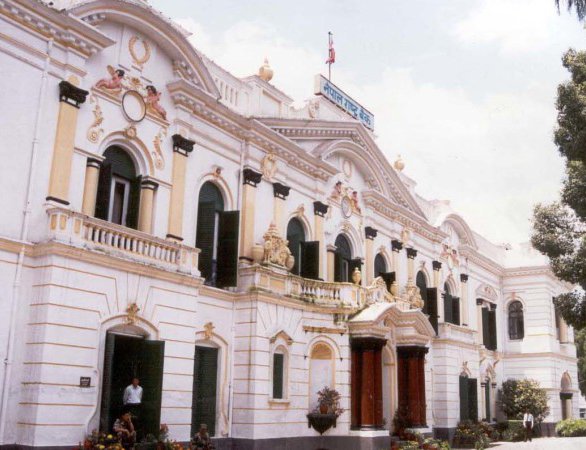
One-and-a-half years ago, Bhim Lal Poudel, the owner of Royal Shoe, rapidly expanded business operation, raising the factory’s staff strength by around 50 per cent to 225. A critical factor that encouraged Poudel to increase production of shoes was low interest rate on loans.
“Lending rate had fallen to seven per cent per annum. This had drastically reduced my debt servicing cost, enabling me to expand the business,” says Poudel, who had acquired around Rs 80 million in credit from a commercial bank some six years ago to set up his shoe factory.
Ironically, the interest rate which had once worked as an incentive for Poudel has now emerged as a disincentive threatening his very existence. This is because the interest on Poudel’s loan has spiralled up from seven per cent to 13 per cent. “I’m now forced to pay Rs 4-5 million extra per year in interest cost,” says Poudel. “This high debt servicing cost is now eating into my profit.”
Poudel has since cut around 75 jobs to make up for the loss. “I’ll have to cut more jobs if bank financing continues to become expensive,” says Poudel.
Commercial banks have been raising lending rates for the last several months, stating deposits have become expensive due to deceleration in remittance inflow and slow public spending, especially capital spending. This has pushed up lending rates to as high as 22 per cent.
“The capital has become very expensive these days, making it tough for businesses to survive,” says Sunil Chitrakar, vice-president of the Federation of Handicraft Associations of Nepal.
According to The Himalayan Times, the central bank has informally said that it intends to keep deposit rates within a range of seven to eight per cent and lending rates within a range of 12 to 13 per cent this fiscal. Nepal Bankers’ Association has already barred commercial banks from offering over eight per cent interest on savings deposits and over 11 per cent interest on fixed deposits. The central bank has given tacit approval to this practice of locking the deposit rates, which, many say, thwarts competition. But it has maintained awkward silence about runaway lending rates. This is hurting the productive sector, which needs large chunks of capital to keep their businesses moving.
“Interest rate on term and working capital loans has now breached the 13 per cent mark and is likely to hit 15 per cent soon,” says Rabin Kumar Shrestha, president of the Footwear Manufacturers Association of Nepal. These rates, according to many, are being raised even without giving prior information to borrowers. “How can entrepreneurs of the productive sector survive in this environment?” questions Shrestha.
The government and the central bank have long been saying more credit should go towards the productive sector to raise domestic production, create jobs, bridge the ever-widening trade deficit and stimulate economic growth. A big portion of banking sector loans is being used to purchase real estate, stocks and cars, considered unproductive areas, as they cannot create jobs continuously.
Nepal needs to create more jobs in the coming days because fewer workers are going abroad for employment.
Around 512,000 workers join the domestic job market every year, according to the Ministry of Finance. Earlier, over 400,000 of these new entrants used to find jobs in overseas labour markets. Now the outflow of Nepali workers has declined, meaning more jobs need to be created in the country. This calls for the need to establish more small and medium enterprises, as they are the biggest job providers in many countries.
- Qatar And Nepal Ink Several MoUs, Returned Home Completing Two Days Visit
- Apr 24, 2024
- Russia Industrialists Met Prime Minister Dahal
- Apr 24, 2024
- President Paudel Hosts Banquet In Honour Of Visiting Qatari Emir
- Apr 24, 2024
- Weather Forecast: Thunder Showers Is Likely At Few Places Of Koshi, Karnali And Sudur Pashchim
- Apr 24, 2024
- Japan Hands Over The Community Center For Disaster Prevention
- Apr 23, 2024
















